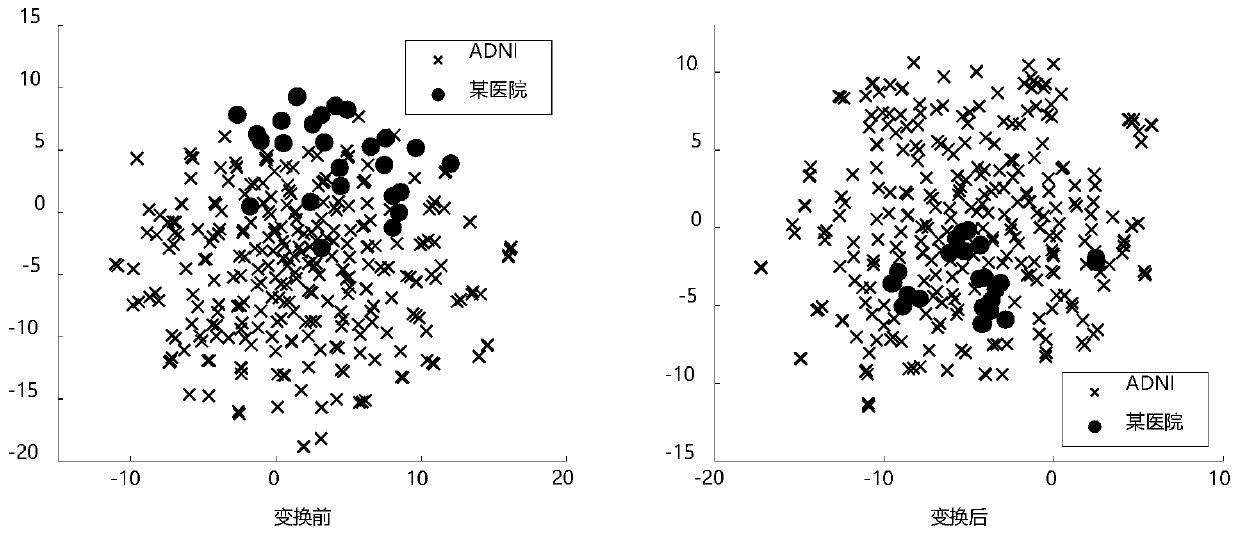Alzheimer's disease detection method based on data space transformation
A data space and data technology, applied in diagnostic recording/measurement, medical simulation, medical automated diagnosis, etc., can solve the problems of increasing available training samples for disease diagnosis, low accuracy of auxiliary diagnostic models, inconsistent distribution of different data sets, etc., to achieve Extensive application of scalability, improved accuracy and generalization capabilities, and expanded training data sets
- Summary
- Abstract
- Description
- Claims
- Application Information
AI Technical Summary
Problems solved by technology
Method used
Image
Examples
Embodiment Construction
[0024] The invention provides a detection method for Alzheimer's disease based on data space transformation, which adopts machine learning and data space transformation algorithm, and is a brand-new detection method for Alzheimer's disease. This method is an fMRI-based AD auxiliary diagnosis method suitable for small sample sets. It uses the data space transformation method to solve the problem that an accurate and robust machine learning model cannot be established due to insufficient sample size; at the same time, it uses machine learning algorithms to establish an auxiliary diagnosis. The model achieves accurate and robust AD disease detection, and its detection accuracy is greatly improved compared with traditional machine learning-assisted diagnosis methods.
[0025] The principle of the present invention is: 1) calculate the correlation coefficient between any two time series in the region of interest time series of each scanning, this correlation is undirected, obtains t...
PUM
 Login to View More
Login to View More Abstract
Description
Claims
Application Information
 Login to View More
Login to View More - R&D
- Intellectual Property
- Life Sciences
- Materials
- Tech Scout
- Unparalleled Data Quality
- Higher Quality Content
- 60% Fewer Hallucinations
Browse by: Latest US Patents, China's latest patents, Technical Efficacy Thesaurus, Application Domain, Technology Topic, Popular Technical Reports.
© 2025 PatSnap. All rights reserved.Legal|Privacy policy|Modern Slavery Act Transparency Statement|Sitemap|About US| Contact US: help@patsnap.com



